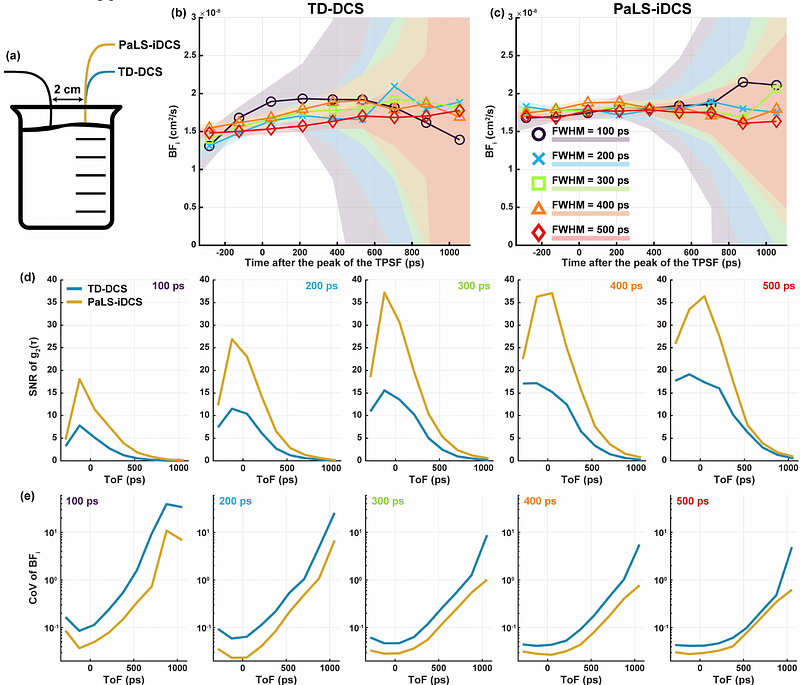Pathlength-selective, interferometric diffuse correlation spectroscopy (PaLS-iDCS)

Pathlength-selective, interferometric diffuse correlation spectroscopy (PaLS-iDCS)
Robinson, M. B.; Renna, M.; Otic, N.; Franceschini, M. A.; Carp, S. A.
AbstractDiffuse correlation spectroscopy (DCS) is an optical method that offers non-invasive assessment of blood flow in tissue through the analysis of intensity fluctuations in diffusely backscattered coherent light. The non-invasive nature of the technique has enabled several clinical applications for deep tissue blood flow measurements, including cerebral blood flow monitoring as well as tumor blood flow mapping. While a promising technique, in measurement configurations targeting deep tissue hemodynamics, the standard DCS implementations suffer from insufficient signal-to-noise ratio (SNR), depth sensitivity, and sampling rate, limiting their utility. In this work, we present an enhanced DCS method called pathlength-selective, interferometric DCS (PaLS-iDCS), which improves upon both the sensitivity of the measurement to deep tissue hemodynamics and the SNR of the measurement using pathlength-specific coherent gain. Through interferometric detection, PaLS-iDCS can provide time-of-flight (ToF) specific blood flow information without the use of expensive time-tagging electronics and low-jitter detectors. The new technique is compared to time-domain DCS (TD-DCS), another enhanced DCS method able to resolve photon ToF in tissue, through Monte Carlo simulation, phantom experiments, and human subject measurements. PaLS-iDCS consistently demonstrates improvements in SNR (>2x) for similar measurement conditions (same photon ToF), and the SNR improvements allow for measurements at extended photon ToFs, which have increased sensitivity to deep tissue hemodynamics (~50% increase). Further, like TD-DCS, PaLS-iDCS allows direct estimation of tissue optical properties from the sampled ToF distribution without the need for a separate spectroscopic measurement. This method offers a relatively straightforward way to allow DCS systems to make robust measurements of blood flow with greatly enhanced sensitivity to deep tissue hemodynamics, enabling further applications of this non-invasive technology.


